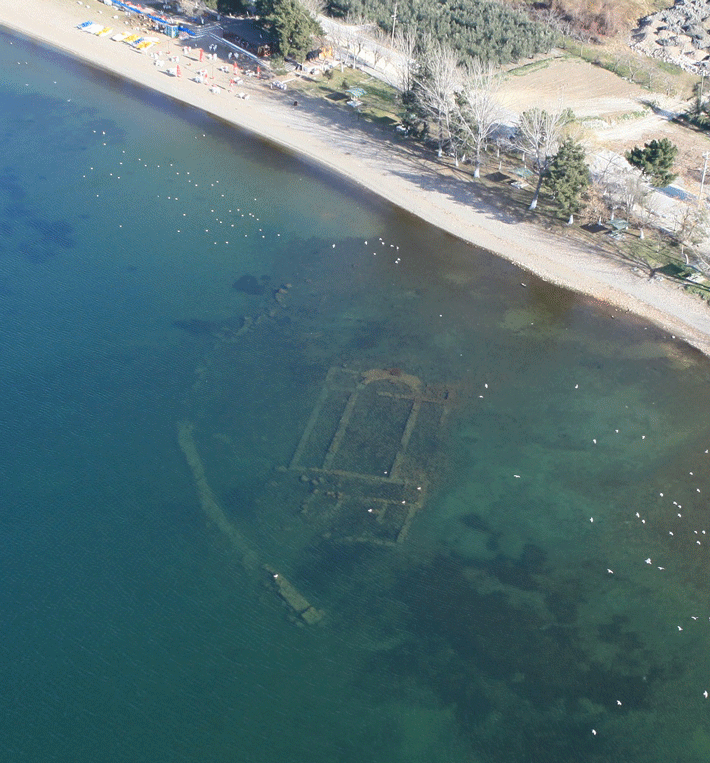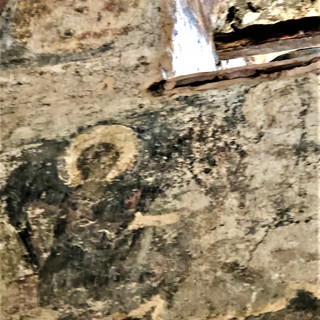Hidden gems of Iznik
- Cactusflower

- Jan 17, 2020
- 5 min read
Updated: Jun 14, 2022
If you have ever spoken the words “in the name of the Father, the Son, and the Holy Spirit,” you have a connection to Iznik, Turkey.

Iznik derives from a corruption of the phrase “in Nicaea.” It is the ancient Nicaea where, in 325 A.D., the First Council of Nicaea developed what is the Christian doctrine on God and the Trinity, the Nicene Creed. The creed remains the only statement of faith accepted by all major parts of the Christian faith today, though sometimes in a different format.
Iznik has been on my places to visit list for some time, and my husband and I took a trip there from Istanbul last year. The town is on the tentative list for UNESCO World Heritage Site, and we had several stops in mind.
One goal was to see for ourselves the ancient sunken Byzantine basilica in Lake Iznik, discovered back in 2014 but only recently a story in the international media. Archeologists believe that the church was built around 390 A.D. on the shore of the lake, but was destroyed in an earthquake in 740 A.D. and sunk under the water. It is believed that the church was dedicated to an early Christian martyr, Saint Neophytos of Nicaea, who was executed in 303 A.D. Some finds at the site suggest the church may have been built over an even older pagan temple.
The other primary objective (for me--my husband, not so much) was to visit the center of production for the beautiful Iznik tiles and porcelain, those splendid reproductions of tiles that graced the Ottoman Empire. Often with bright deep blues and reds, these porcelain tiles are famous for their stylized flowers—tulips and carnations—and seafaring scenes. They have been a favorite of mine for years. A traveler to Turkey can now get inexpensive (but still beautiful and useful) souvenirs such as coasters and trivets in these gorgeous designs at any souvenir shop, or original hand signed work by famous Iznik artists.
Getting there is half the fun!
It is not easy to get to Iznik. As the crow flies, the distance from Istanbul is only 90 miles. But there is a huge body of water, the Bay of Izmit, between Istanbul and Iznik, resulting in various ways that involve catamarans, ferries, or simply a very long bus ride. We took the shortest route, via the Osman Gazi Bridge, which is the longest suspension bridge in Turkey and the fourth longest in the world. This bridge enables travelers to make the journey across the Bay of Izmit in just three minutes instead of taking the one-hour ferry ride or the high-traffic 100-kilometer detour over land. All for a $103 per vehicle toll—that’s a lot of money in Turkey, but it didn’t seem so bad rolled into our rental car fees! Iznik was a short drive after we crossed the bridge, partly on a first-class highway and then on a two-lane rural road, heavily populated with olive groves.
The underwater basilica
Our first order of business was to look for the sunken basilica. Not knowing
exactly what we would find, or where, it only made sense to drive to the lake. There we saw a brown sign (that universal tourist sign) that read “Bazilika.” Bingo. All we found, however, was a large area fenced off with some notes about the basilica and future plans. (They plan to keep it in place “as is,” as an underwater museum.) The area was right off the water, and the ruins are at a depth of 6-10 feet. Looking at media photos of the newly discovered, submerged basilica, two things struck me: first, how very close it is to the shore, and secondly, how visible it is—why did it take 1200-plus years for anyone to see it? The archeologist who did find it said almost the same thing in an interview: he looked out his airplane window and, voila, there it was--how had he never seen it before?
Hagia Sophia/Orhan Mosque
Disappointed that there was nothing we could see about the sunken basilica (but we will be back!), we headed into town and stumbled upon the Hagia Sophia (Holy Wisdom) church, now called the Orhan Mosque. You just don’t hear much about this place, which is a real shame. It played a significant role in the shaping of Christianity, and later became a showcase for the work of the famed Ottoman architect Sinan, whose beautiful mosques still grace Turkey today.
A short history
Ancient Nicaea was both a Byzantine and then a Roman town before falling to the Ottomans in 1331, after a long siege. Orhan I captured the city from the Byzantines and for a short period the town became the capital of the expanding Ottoman emirate. Many of its buildings were destroyed, and the material used by the Ottomans in building mosques and other facilities. Hagia Sophia in the center of the town was converted into a mosque and became known as the Orhan Mosque. With the fall of Constantinople to the Ottoman armies in 1453, Nicaea lost much of its significance, but later became a major center for ceramics (the Iznik tiles that I love) in the 17th century.

The church of Hagia Sophia was built by Justinian I in the 6th century. It was in this building that the Second Council of Nicaea met in 787. The purpose of that meeting was to restore the use and veneration of icons (or holy images) which had been suppressed throughout the Empire for hundreds of years.
In 1935, with the establishment of the Republic of Turkey, Ataturk had Hagia Sophia and most of the other ancient churches that had been converted to mosques designated as museums. However, under President Erdogan, the museums are being changed back to mosques. In November 2011 Iznik’s Hagia Sophia went back to being the Orhan Mosque.
The atmosphere was striking. The sunlight was stunning as it shone through the ancient windows, falling on the altar and the old stones—I expected to see a bearded bishop from days gone by walk in at any moment, or worshipers coming in for a prayer. The paintings on the walls, fading after a thousand-plus years, were still discernible. There was an old sarcophagus. You could feel the movement of history, hear the battle cries as empires rose and fell, groups came and went: the Greeks, the Romans, the Byzantines, the Ottomans, and the Turks today. I could see in my mind’s eye the parade of new people, new religions, often slow, but changing nonetheless. History was made here, in this dusty town, the battles between western and eastern civilizations fought and in some shape, continuing to this day. Whatever your religion, you can see the historical movement of your faith. There is so much here in this structure, whether a church or mosque or museum. And in another part of the structure, prayer rugs were laid out towards Mecca, and a woman cleaned the new marble floors. To the victor belongs the spoils. It's too bad though that historical sites cannot be preserved as the history they are, wherever they are located in the world.
With the time we had left in Iznik, our choice was to visit the tile factories or the artist quarters where they individually design the tiles and produce some lovely works of art. We chose the artist quarters, where I found some

lovely porcelain pieces for my friends and family, as well as some to grace our home back in Texas.
Iznik is definitely worth a return trip for us. Hopefully, the underwater basilica will be open, and the Iznik Museum (which has been closed for several years) will have re-opened. We're ready to go back to find more hidden gems in Iznik!
The sunken Byzantine basilca in Lake Iznik (drone footage)

































































Comments